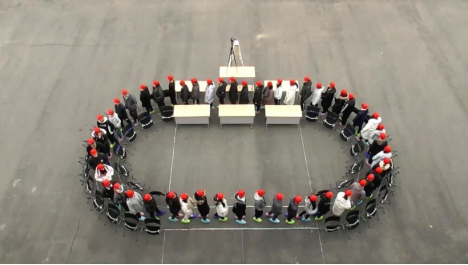MA Yi, an associate professor atInstitute for DisasterManagement and Reconstruction (IDMR),Sichuan University,has revealed theoccurrence regularity of crowd synchronization behaviour and its functional benefits for human movement. The study was published in January 2021on journalNature Human Behaviour (IF=24.252)with the title ofSpontaneous synchronization of motion in pedestrian crowds of different densities.

The research team led byDrMA Yi hasrecruited 70 participants and conducted a single-file crowd movement experiment in a circular walkway (seethe photo below), totry tofind out the crowd density condition that most likely to induce crowd synchronization, the internal mechanism of crowd synchronization, and the functional benefits of crowd synchronization for human movement. In this experiment, unlikethepreviousstudies, theresearchteam not only tracked the movements of the participants from the perspective of their heads, but also tracked their movements from a foot perspective by placing sensors on the feet of the participants, in order to capture wider research data, such as the span of each pedestrian's feet, the distance between the feet of the follower and the leader, etc.

“This study confirms that crowd synchronization can occur spontaneously in the absence of external stimuli,” saidDrMA Yi, “especially when the flow rate of pedestrians reaches its maximal value and the safe distance between pedestrians is not wide enough.”

Dr MA Yifurther explained, "this study shows that crowdsynchronization is actually triggered by the lack of a safe distance between pedestrians. It can help pedestrians to movecollectively and effectively without body collisions,and toenhance cooperation amongindividuals in acrowd, and improve the overall movement efficiency of the crowd."
This study reveals theoccurrence regularity of crowdsynchronization behaviour and its functional benefits for human movement, which will help to better understand collective movement behaviour of human beings, it is also instructive to understand thesynchronization behaviour in other systems, such as animal groups, self-propelled particle systems,multi-agent system, and so on. In addition,understanding of the crowdsynchronization behaviour will help to prevent the vibration breakage of large building and structures (such as footbridges and long-span floors) caused by synchronization. For example, the findings of this study suggest that maximum flow is a key signal forsynchronization, suggesting that limiting or shortening the duration of the maximum flow state may be an effective strategy to prevent such vibrational breakage.

